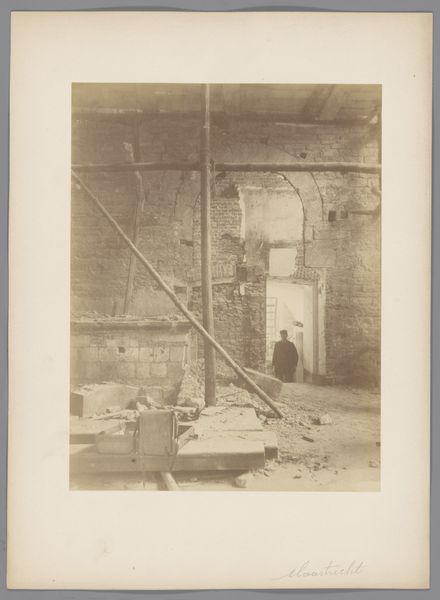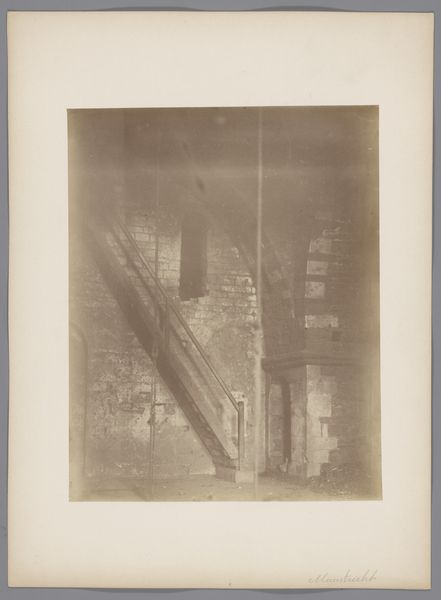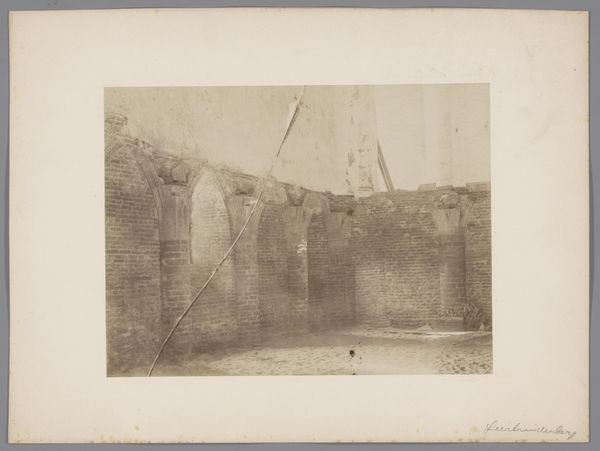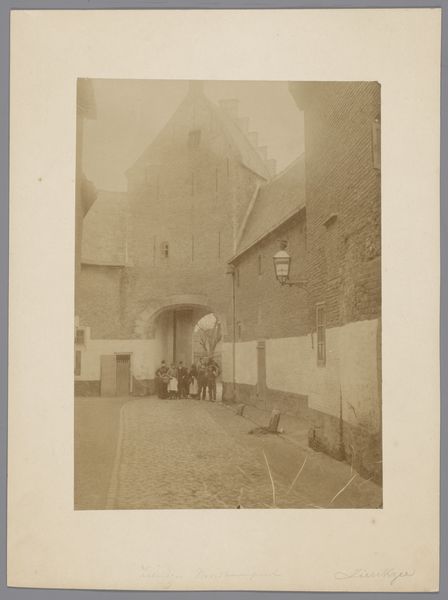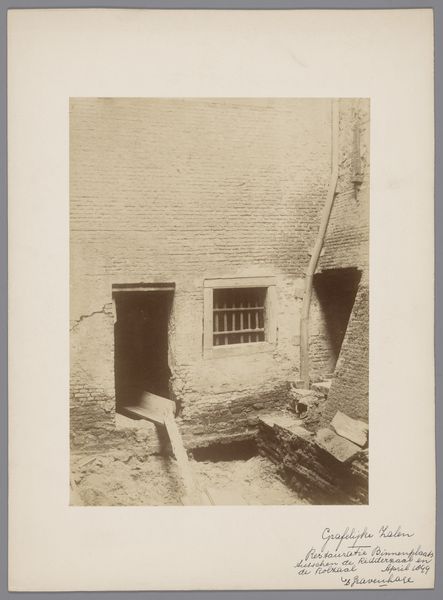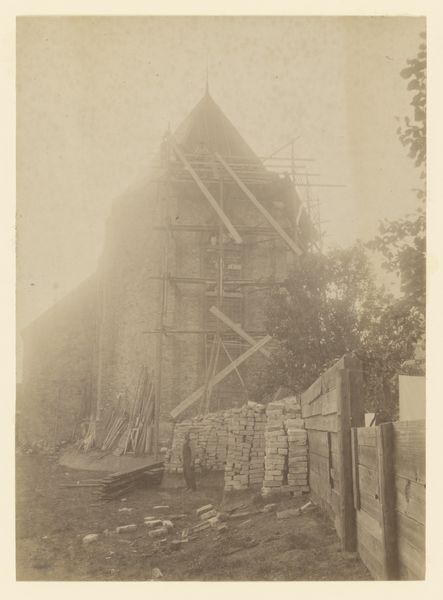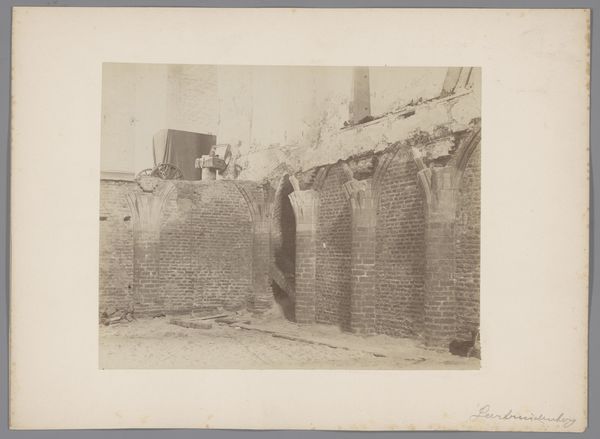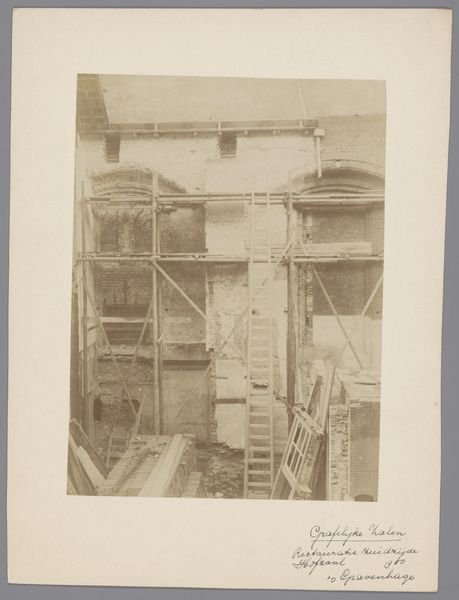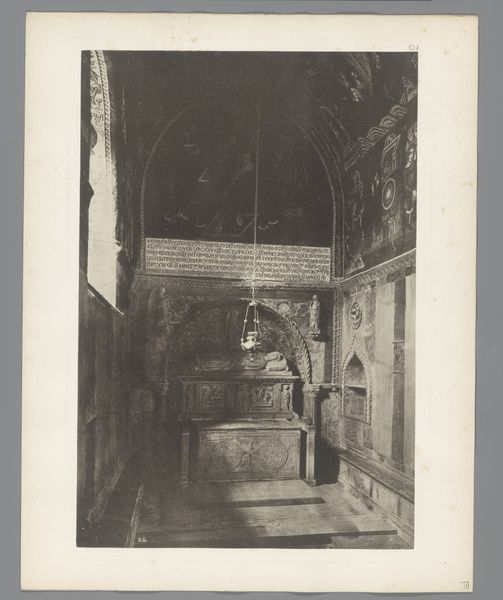
Restauratie van de kapel in het zuidtransept van de Onze-Lieve-Vrouwebasiliek te Maastricht c. 1890 - 1915
0:00
0:00
Dimensions: height 233 mm, width 177 mm
Copyright: Rijks Museum: Open Domain
This photograph, of the restoration of the chapel in the south transept of the Onze-Lieve-Vrouwebasiliek in Maastricht, captures a moment frozen in time. It's rendered in muted sepia tones, a palette that lends a sense of historical distance but also focuses our attention on the textures of the stone and wood. The scaffolding dominates the foreground, a lattice of raw timber that speaks to the labor and process of preservation. It’s interesting how the lines of the scaffolding intersect with the figures in the chapel, a group of onlookers who seem dwarfed by the scale of the space and the task at hand. The cracks in the wall are like veins, mapping the history of the building. The light filters unevenly into the space, creating a contrast between shadow and illumination. It reminds me that art is always about seeing, not just what is there but also what is revealed through the artist's—or in this case, the photographer's—eye. It brings to mind Bernd and Hilla Becher's photographs of industrial structures, images which share a similar understated approach to capturing the austere beauty of architecture and the signs of its use.
Comments
No comments
Be the first to comment and join the conversation on the ultimate creative platform.
